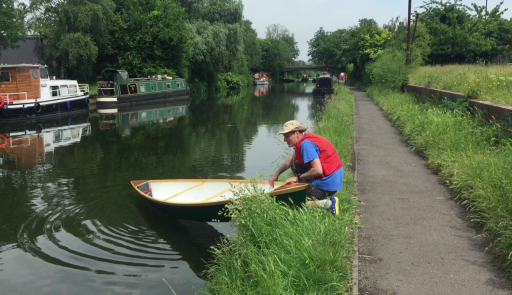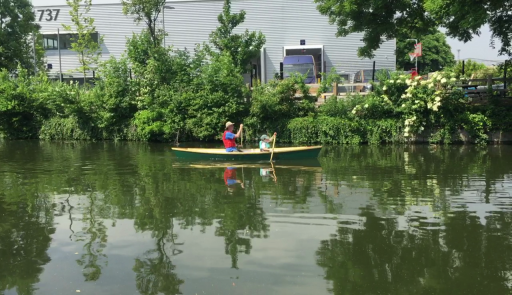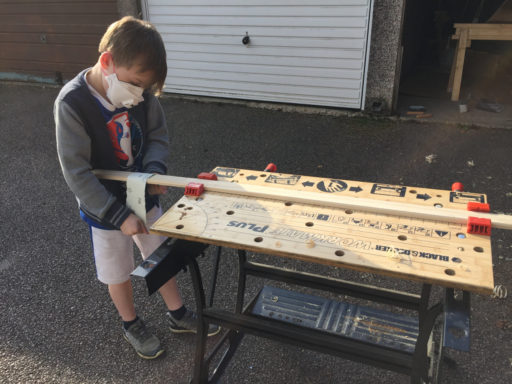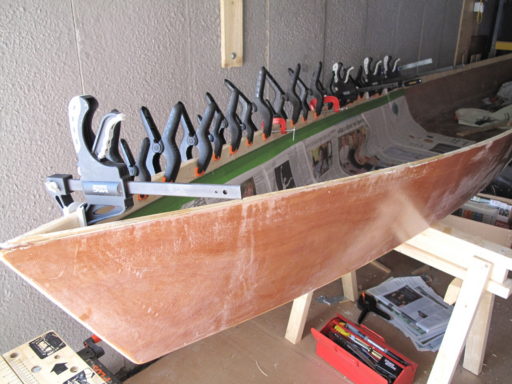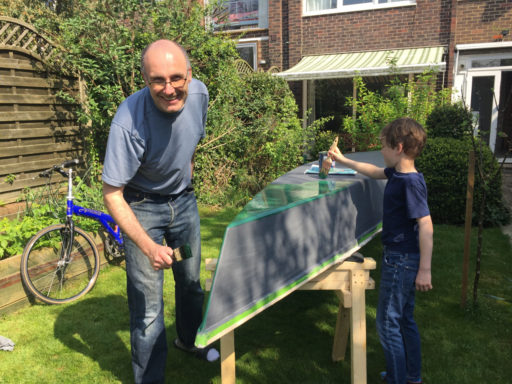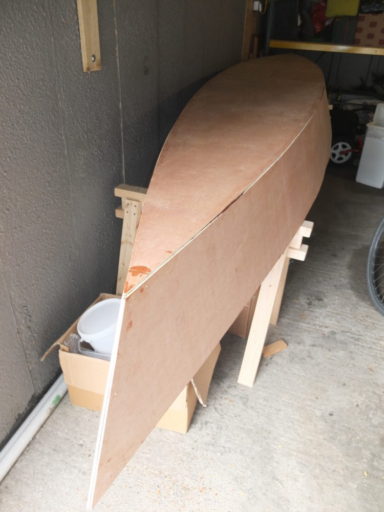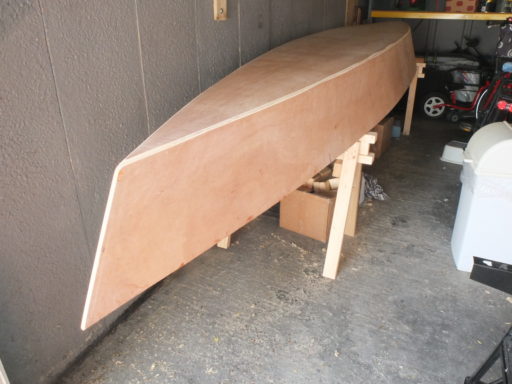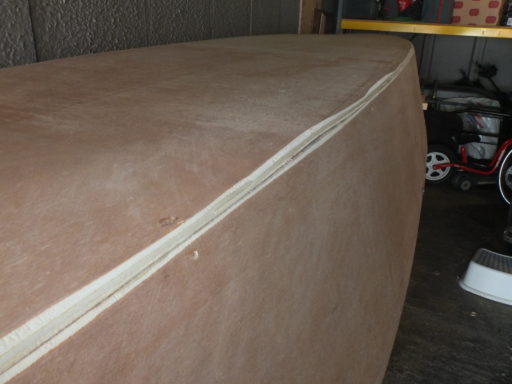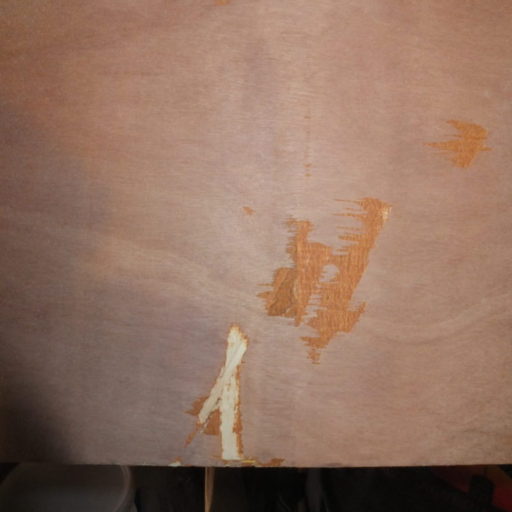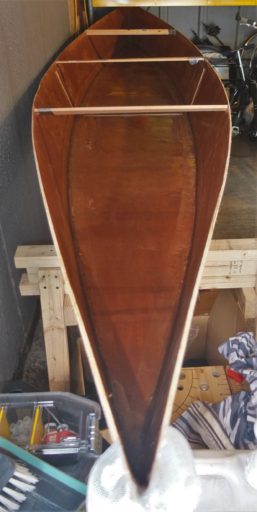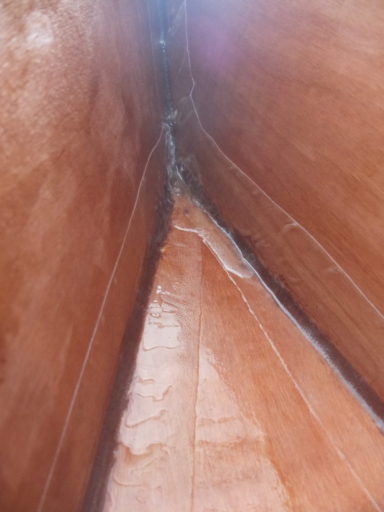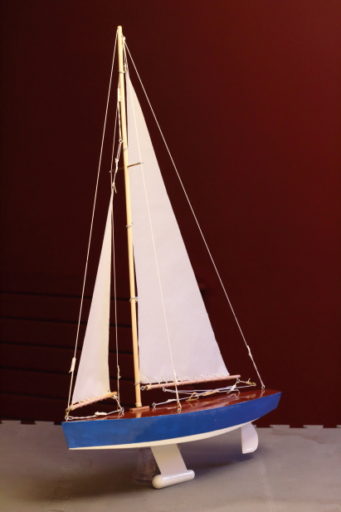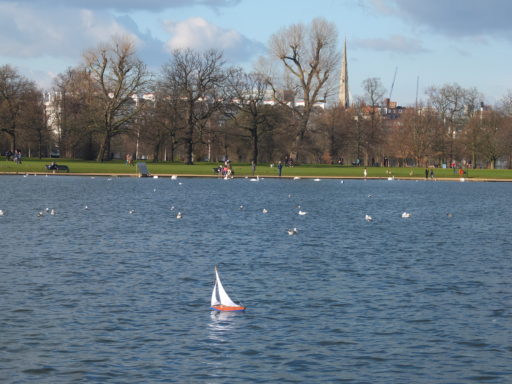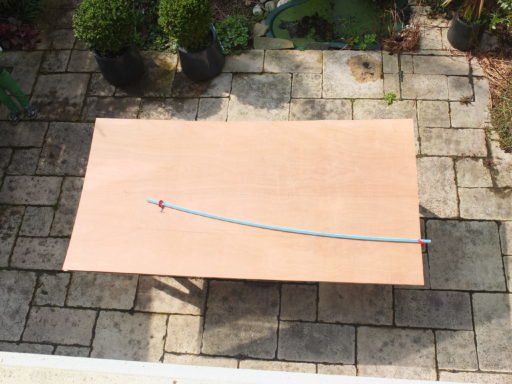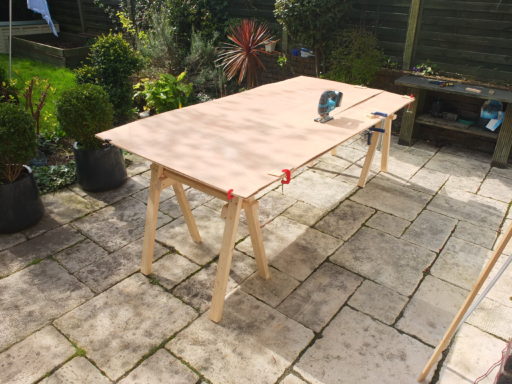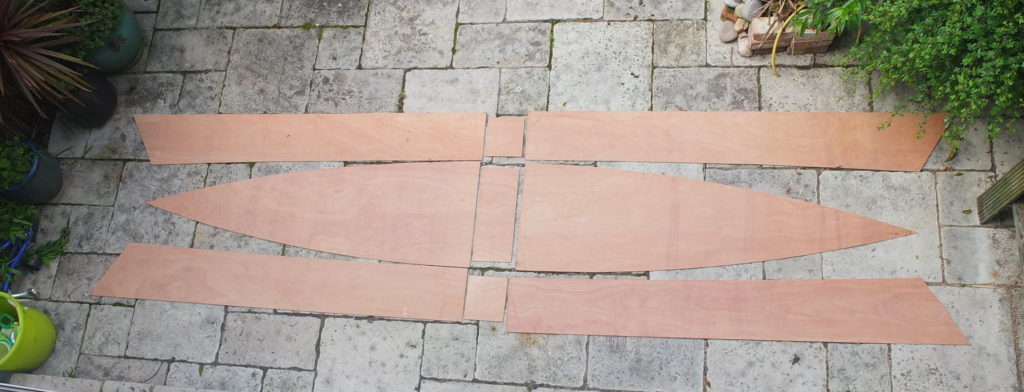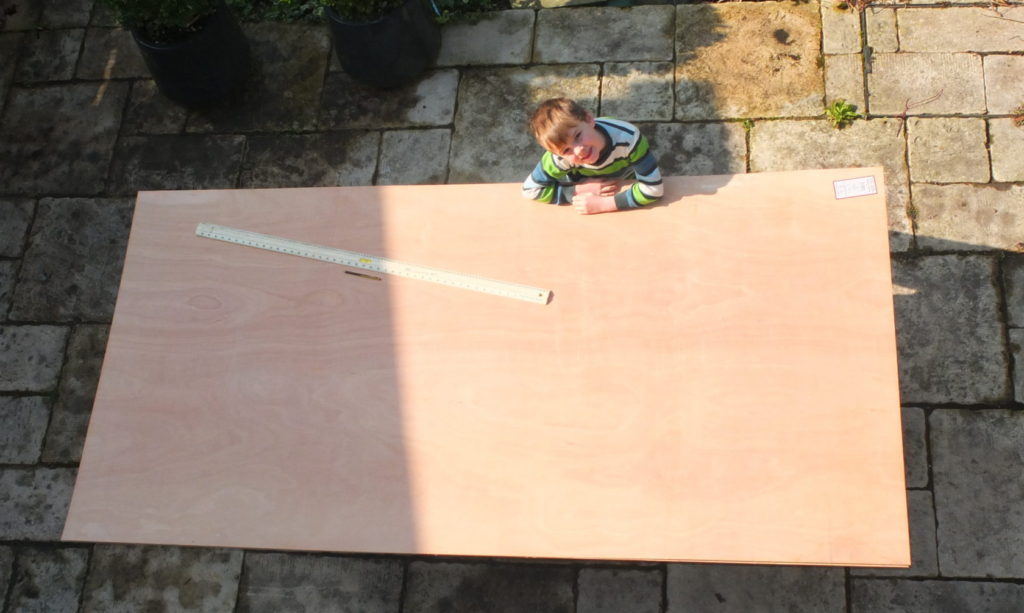So, the garage tidied, it was time to join the sides and bottom using butt joints. Unfortunately, no pictures, so on to the next bit.
Bateau.com’s instructions suggest that using duct tape to “stitch” the panels together to hold them in place for gluing would be sufficient, but, it rapidly became clear that it wasn’t, so I added a few cable ties:
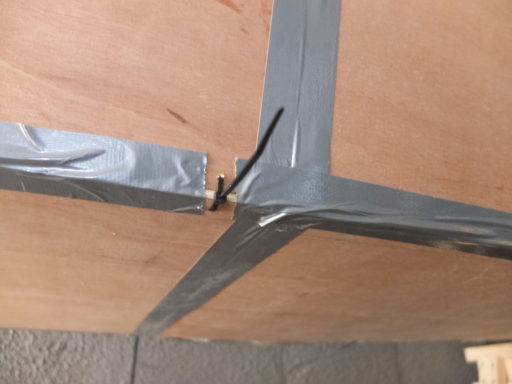
As the cable ties were an afterthought, I did not put in very many – a mistake as it happens. Another reason for avoiding them is to reduce the number of gaps to fill in the fillet (made with epoxy and wood flour), like this:
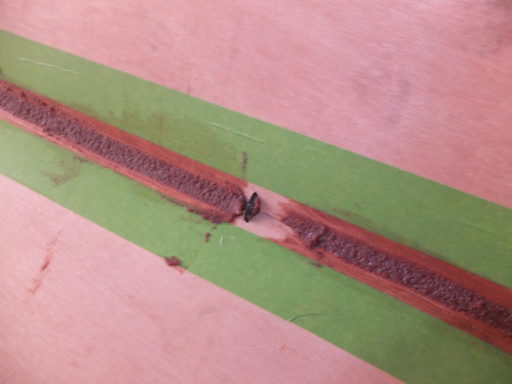
The green masking tape was meant to keep the fillets straight, but I left too large a gap; not a major problem as it happens.
After the epoxy had cured, I removed the tape inside and out and contemplated my work on the inside:
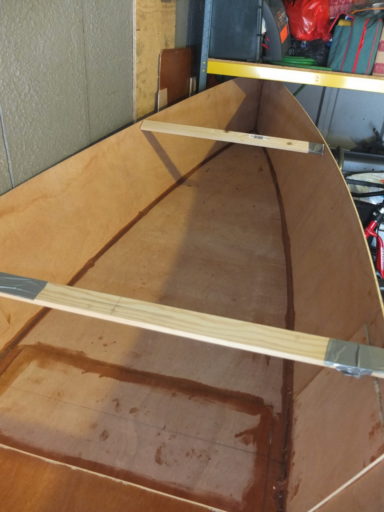
And from the outside:
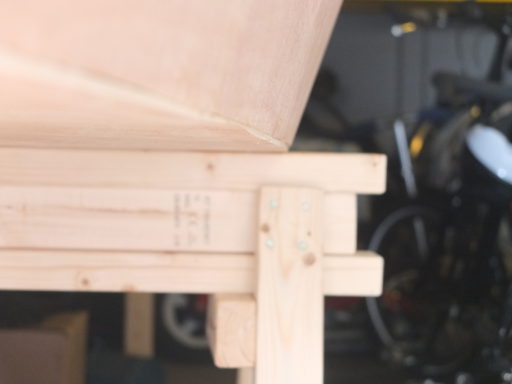
Oh dear, the tape covering the seam meant that I couldn’t check the alignment and the few cable ties I used pulled it out of line. Well it’s in order to make mistakes like this that we are doing this before building the boat that we really want.
